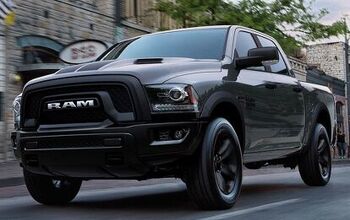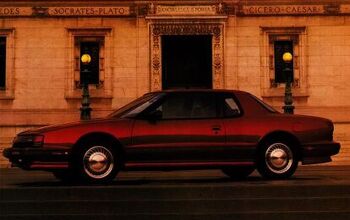Senate Approves Bill Injecting Cash Into Semiconductor Industry

Apologies for all the semiconductor news. But it’s the topic of the day, with the United States Senate recently approving $52 billion in emergency spending to help bolster domestic chip production and another $190 billion for R&D programs.
Passing the vote (68-32) under the premise that boosting localized chip production would help prevent domestic automakers from having to cut corners, the Senate is also suggesting the funding could give the U.S. a competitive advantage against China. The Communist Party of China (CCP) has opposed the U.S. Innovation and Competition Act (formerly the Endless Frontier Act), with statements released from the National People’s Congress (NPC) demanding the legislation be halted immediately.
“[This bill] smears China’s development path and domestic and foreign policies,” read statement reported by the Xinhua News Agency,” [it] interferes in China’s internal affairs under the banner of innovation and competition.”
Other media entities similarly operated under the supervision of the Chinese government have issued similar stories, often framing the United States as an economic aggressor. That is debatable, though supporters of the bill have clearly implied that the bill is partially designed to combat China’s growing industrial dominance and global influence.
From the Global Times:
In a statement, the NPC expressed its strong dissatisfaction and firm opposition to the so-called US Innovation and Competition Act of 2021, which fabricates so-called “China treat” to preserve the US global hegemony and seeks to deprive China of its legitimate development rights through technological and economic “decoupling”.
The harshly worded statement also come as the NPC’s standing committee is also moving ahead with an anti-foreign sanctions draft law this week, which is aiming to counter unilateral and discriminatory sanctions imposed by foreign governments on Chinese entities and individuals.
“At a time when the world enters a period of turbulence and change, the practice of treating China as an ‘imaginary enemy’ at every turn is against the general trend of the world, unpopular and doomed to fail,” reads the statement.
With the CCP repeatedly signaling that its intends on invading Taiwan, there’s a distinct possibility that the region could end up with a stranglehold on the chip industry. Western countries have basically all started to think about how to avoid such a catastrophe, largely ignoring the political fallout accompanying the invasion of a sovereign island nation. The European Union has also launched initiatives to bolster localized chip production this year, which was similarly opposed by China.
While the brunt of the proposed funding would actually go toward supporting research at universities and trade schools, $52 billion is to go directly toward supporting the industry. Bloomberg reported that has gone over incredibly well with those in the chip business.
“Semiconductors form the nerve center of America’s economy, national security, and critical infrastructure,” said John Neuffer, the president and CEO of the Semiconductor Industry Association. “We look forward to working with leaders in the administration and Congress to swiftly enact needed federal investments in chip technology to help ensure more of the chips our country needs are researched, designed and manufactured on U.S. shores.”
The latter aspect of the bill was championed by Republicans (ditto for the China-focused amendments) after they criticized Democrats for wanting to devote the brunt of the funding to educational concerns and being soft on the CCP. Several billion has also been earmarked for defense spending, specifically for any chip related research conducted by DARPA over the next five years. But some on the right conversely believe this is at odds with the free-market approach and hinged on an unsavory collaboration between private corporations and the government.
“Maintaining our technological superiority over China requires punishing bad Chinese behavior and relying on the natural innovative entrepreneurship of America’s market economy, not by imitating Chinese central planning,” Pennsylvania GOP Senator Pat Toomey said in a statement before voting against the bill.
This is a slippery fish because everyone is aware that chip shortages are absolutely crippling our ability to manufacture goods, specifically in respect to automobiles. But not everyone feels comfortable with the solutions being presented.
Currently, the bill enjoys the support of Senate Democrats, the Biden administration, and gaggle of Republicans that appear broadly okay with government spending. But the House Science Committee has some ideas of its own about how to fund R&D programs that would benefit the domestic semiconductor industry. Marrying those to the Senate proposals could delay progress and House Republicans have not been signaling the same enthusiasm in respect to using government money. Though they have indicated a desire to further protect intellectual property relating to Chinese businesses and an understanding that domestic manufacturers are really struggling due to the chip shortage.
We’ll have to see how it goes but were predicting a secondary slew of amendments before anything passes into law.
[Image: Architect of the Capitol]

A staunch consumer advocate tracking industry trends and regulation. Before joining TTAC, Matt spent a decade working for marketing and research firms based in NYC. Clients included several of the world’s largest automakers, global tire brands, and aftermarket part suppliers. Dissatisfied with the corporate world and resentful of having to wear suits everyday, he pivoted to writing about cars. Since then, that man has become an ardent supporter of the right-to-repair movement, been interviewed on the auto industry by national radio broadcasts, driven more rental cars than anyone ever should, participated in amateur rallying events, and received the requisite minimum training as sanctioned by the SCCA. Handy with a wrench, Matt grew up surrounded by Detroit auto workers and managed to get a pizza delivery job before he was legally eligible. He later found himself driving box trucks through Manhattan, guaranteeing future sympathy for actual truckers. He continues to conduct research pertaining to the automotive sector as an independent contractor and has since moved back to his native Michigan, closer to where the cars are born. A contrarian, Matt claims to prefer understeer — stating that front and all-wheel drive vehicles cater best to his driving style.
More by Matt Posky
Latest Car Reviews
Read moreLatest Product Reviews
Read moreRecent Comments
- Bd2 If I were going to spend $ on a ticking time bomb, it wouldn't be for an LR4 (the least interesting of Land Rovers).
- Spectator Wild to me the US sent like $100B overseas for other peoples wars while we clammer over .1% of that money being used to promote EVs in our country.
- Spectator got a pic of that 27 inch screen? That sounds massive!
- MaintenanceCosts "And with ANY car, always budget for maintenance."The question is whether you have to budget a thousand bucks (or euro) a year, or a quarter of your income.
- FreedMike The NASCAR race was a dandy. That finish…


































Comments
Join the conversation
I agree with the posters above that Just In Time greatly exacerbated the problem. JIT is like a house of cards: it is sooooo light weight, however the smallest breeze and everything comes tumbling down. Yet most companies, intent on squeezing the last half penny out of a product, embraced it with open arms and open legs.
Not all semiconductor companies will bite on this, as it's focused on the short term, not the long term.